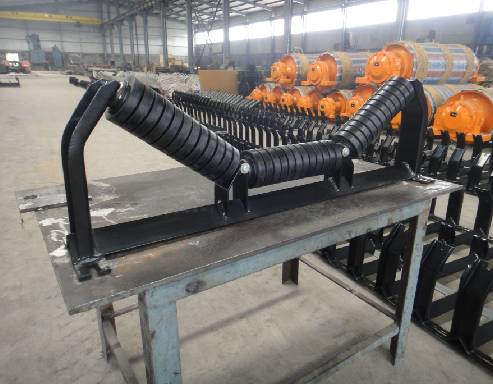 Afrikaans
Afrikaans  Albanian
Albanian  Amharic
Amharic  Arabic
Arabic  Armenian
Armenian  Azerbaijani
Azerbaijani  Basque
Basque  Belarusian
Belarusian  Bengali
Bengali  Bosnian
Bosnian  Bulgarian
Bulgarian  Catalan
Catalan  Cebuano
Cebuano  Corsican
Corsican  Croatian
Croatian  Czech
Czech  Danish
Danish  Dutch
Dutch  English
English  Esperanto
Esperanto  Estonian
Estonian  Finnish
Finnish  French
French  Frisian
Frisian  Galician
Galician  Georgian
Georgian  German
German  Greek
Greek  Gujarati
Gujarati  Haitian Creole
Haitian Creole  hausa
hausa  hawaiian
hawaiian  Hebrew
Hebrew  Hindi
Hindi  Miao
Miao  Hungarian
Hungarian  Icelandic
Icelandic  igbo
igbo  Indonesian
Indonesian  irish
irish  Italian
Italian  Japanese
Japanese  Javanese
Javanese  Kannada
Kannada  kazakh
kazakh  Khmer
Khmer  Rwandese
Rwandese  Korean
Korean  Kurdish
Kurdish  Kyrgyz
Kyrgyz  Lao
Lao  Latin
Latin  Latvian
Latvian  Lithuanian
Lithuanian  Luxembourgish
Luxembourgish  Macedonian
Macedonian  Malgashi
Malgashi  Malay
Malay  Malayalam
Malayalam  Maltese
Maltese  Maori
Maori  Marathi
Marathi  Mongolian
Mongolian  Myanmar
Myanmar  Nepali
Nepali  Norwegian
Norwegian  Norwegian
Norwegian  Occitan
Occitan  Pashto
Pashto  Persian
Persian  Polish
Polish  Portuguese
Portuguese  Punjabi
Punjabi  Romanian
Romanian  Russian
Russian  Samoan
Samoan  Scottish Gaelic
Scottish Gaelic  Serbian
Serbian  Sesotho
Sesotho  Shona
Shona  Sindhi
Sindhi  Sinhala
Sinhala  Slovak
Slovak  Slovenian
Slovenian  Somali
Somali  Spanish
Spanish  Sundanese
Sundanese  Swahili
Swahili  Swedish
Swedish  Tagalog
Tagalog  Tajik
Tajik  Tamil
Tamil  Tatar
Tatar  Telugu
Telugu  Thai
Thai  Turkish
Turkish  Turkmen
Turkmen  Ukrainian
Ukrainian  Urdu
Urdu  Uighur
Uighur  Uzbek
Uzbek  Vietnamese
Vietnamese  Welsh
Welsh  Bantu
Bantu  Yiddish
Yiddish  Yoruba
Yoruba  Zulu
Zulu Head Pulley and Tail Pulley Systems - Enhance Your Conveyor Efficiency
Understanding Head Pulley and Tail Pulley Systems in Conveyor Technology
In the realm of industrial machinery, conveyor systems play a pivotal role in the efficient movement of materials and products. Among the critical components of these systems are the head pulley and tail pulley, both of which contribute significantly to the overall operation and functionality of the conveyor. Understanding these components can provide insights into the effective design and maintenance of conveyor systems.
Understanding Head Pulley and Tail Pulley Systems in Conveyor Technology
In addition to facilitating belt movement, the head pulley also imparts the necessary tension to the belt. This tension is crucial because it ensures that the belt stays in contact with the pulleys and drives the material effectively. In many systems, adjustable tensioning devices are integrated to maintain the appropriate level of tension as the belt wears over time.
head pulley tail pulley

On the other hand, the tail pulley is located at the loading end of the conveyor system. Its primary functions are to support the weight of the conveyor belt and assist in its return journey back to the head pulley after delivering the load. Unlike the head pulley, the tail pulley is generally not powered; instead, it relies on the tension created by the head pulley to ensure smooth operation of the belt. The tail pulley also plays a crucial role in supporting the return side of the conveyor, ensuring that the belt remains in the proper position.
Both head and tail pulleys are usually constructed from durable materials such as steel or aluminum, designed to withstand heavy loads and resist wear over time. Regular maintenance of these pulleys is essential to prevent premature failure and to ensure the longevity of the conveyor system. Maintenance practices can include inspecting for wear, alignment checks, and ensuring proper lubrication of the bearings associated with each pulley.
When designing a conveyor system, selecting the appropriate head and tail pulleys is critical to achieving optimal performance. Factors such as the type of material being transported, the distance the material needs to travel, and the environmental conditions of the operating site all influence the choice of pulley type, size, and material.
In conclusion, head and tail pulleys are integral components of conveyor systems, each fulfilling vital functions that enhance the efficiency and reliability of material handling processes. A thorough understanding of their roles allows engineers and technicians to design better systems, perform effective maintenance, and avoid costly down-time due to equipment failure. As industries continue to evolve and require more efficient logistics solutions, the significance of these pulleys will undoubtedly remain paramount in conveyor technology.
-
Revolutionizing Conveyor Reliability with Advanced Rubber Lagging PulleysNewsJul.22,2025
-
Powering Precision and Durability with Expert Manufacturers of Conveyor ComponentsNewsJul.22,2025
-
Optimizing Conveyor Systems with Advanced Conveyor AccessoriesNewsJul.22,2025
-
Maximize Conveyor Efficiency with Quality Conveyor Idler PulleysNewsJul.22,2025
-
Future-Proof Your Conveyor System with High-Performance Polyurethane RollerNewsJul.22,2025
-
Driving Efficiency Forward with Quality Idlers and RollersNewsJul.22,2025





























